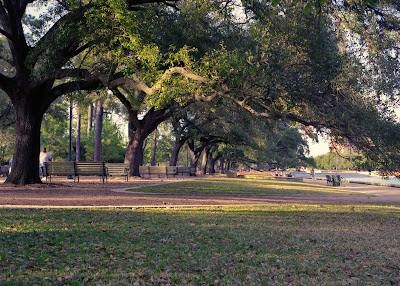A couple of days after my last post we finally got some sunshine here in Southeast Texas. It was welcomed mainly because I could now start work on some good pictures. Overcast skies are good for really even lighting, but the resulting pictures can look so boring.
I also tried some new film this time as well. I have been shooting Kodak Portra 160NC and VC. The NC stands for neutral color and the VC stands for vivid color. To be honest I really can’t see a different because both films seem to be a little flat and contrasty. I suppose I should expect the contrastiness due to the fact that it’s ISO160. I shot 2 rolls of Fuji 160C color film (220-size) and I must say I like those a little more than I like the Kodak Portra offerings. After doing a print of one I was rather impressed. I should look into the Superia line of films.
I read about Kodak Ultracolor film, but I cannot find that in medium format anywhere, online or in a brick-and-mortar establishment. Well, I bit the bullet and ordered some 35mm rolls of Kodak Ultracolor 100 and 400. I also ordered some paper that will hopefully add some more saturation to the photos I’ve already taken… we’ll see.
As to the offering of photos for this entry… let’s examine them, shall we?

These 2 photos are among my favorites taken from the Fuji rolls. I love the composition on the upper picture (taken at Hermann Park in Houston, TX). The lower photo is just beautiful to me. In both photos (indeed on most of the roll) the colors are very vibrant, more so than on the Kodak Portra NC and VC films. The shots are a little contrasty, but to me it works in both pictures as it helps preserve the detail.

This was taken also on the Fuji film, but this one helps illustrate a little better about my last post. The whole picture seems more dynamic when sunshine is a factor. I need to learn to use it better to my advantage as I learned that sunlight can easily washout any color you come across (more examples later as I don’t have access to the machine that contains them at this point).

For those who think I may have forgotten how to use my DSLR, you’re mistaken. These were taken in Galveston, TX over the weekend. We have a digital project coming up in my photography class and the picture of the cathedral dome is going toward that project. The seagull was just an opportunity that presented itself on East Beach.
As always, comments are welcome and encouraged. For those of you who haven’t noticed, check out “The Sharp Carousel” listed under “Other Cool Blogs.” I have seen some of Mark’s work both online and off. He has much creativity and skill in him.




